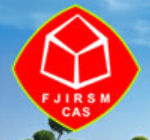预约演示
更新于:2025-05-07

Fujian Institute of Research on The Structure of Matter
更新于:2025-05-07
概览
关联
1
项与 中国科学院福建物质结构研究所 相关的药物作用机制 EGFR拮抗剂 [+1] |
在研机构- |
原研机构- |
在研适应症 |
最高研发阶段批准上市 |
首次获批国家/地区- |
首次获批日期- |
100 项与 中国科学院福建物质结构研究所 相关的临床结果
登录后查看更多信息
0 项与 中国科学院福建物质结构研究所 相关的专利(医药)
登录后查看更多信息
5,133
项与 中国科学院福建物质结构研究所 相关的文献(医药)2025-08-01·Journal of Colloid and Interface Science
Bifunctional gel coating for stabilizing zinc metal anodes in aqueous zinc-ion batteries
Article
作者: Yuan, Tao ; Liu, Zhipeng ; Zhang, Xiangxin ; Zhang, Yining ; Bai, Shuai ; Chen, Sujing ; Qiu, Jikai ; Chen, Junting
2025-08-01·Journal of Colloid and Interface Science
Tumor-microenvironment-activated bimetallic oxide nanoplatform for second near-infrared region fluorescence-guided colon tumor surgery and multimodal synergistic therapy
Article
作者: He, Liangzhen ; Ying, Yunfei ; Dang, Yongying ; Zhang, Ziqian ; Xu, Chao ; Wang, Peiyuan ; Liu, Xiaolong ; Li, Siyaqi ; Xue, Fangqin
2025-08-01·Journal of Colloid and Interface Science
Low-voltage flexible organic transistors utilizing passivated polyelectrolyte dielectrics for tactile sensing and braille recognition
Article
作者: Ma, Yunlong ; Wang, Xiaoyan ; Liu, Changdong ; Liu, Yuting ; Zheng, Qingdong ; Yin, Zhigang
2
项与 中国科学院福建物质结构研究所 相关的新闻(医药)2022-11-23
·药融圈
俄罗斯工程院外籍院士张绪穆教授确认出席2022中国化学制药CMC创新峰会并作主题演讲,与我们线上分享“抗新冠口服药shen26的研发”!演讲场次为:抗病毒/感染药物开发专题—12月2日会场二09:00-09:3001演讲摘要SHEN26项目为RNA依赖性聚合酶(RdRp)抑制剂开发,由南方科技大学张绪穆教授与中山大学郭德银教授团队自主研发。SHEN26项目现由深圳安泰维生物医药有限公司、深圳科兴制药有限公司以及南方科技大学坪山生物医药研究院共同合作进行成果转化。已获得临床试验默示许可(受理号为 CXHL2200414,CXHL2200415),目前正在积极开展临床 I 期健康人试验,现有临床数据显示较优的安全性。同时由南方科技大学第二附属医院(深圳市第三人民医院)卢洪州院长牵头发起IIT患者临床试验也在进行中。顺利开展本项目,将获得价格可及、有效、安全的抗新冠口服药,弥补深圳市乃我国对现有药物研发的不足,完成新冠抗疫最后一块拼图的艰巨任务。02嘉宾简介张绪穆,俄罗斯工程院外籍院士张绪穆,1961年生,国际知名配位化学和金属有机化学家,现任南方科技大学理学院副院长、化学系讲席教授。1982年在武汉大学获得学士学位;1985年在中国科学院福建物质结构研究所获得硕士学位,师从卢嘉锡院士(诺贝尔获奖者Linus Pauling 的博士后,时任中国科学院院长);1987年在加州大学圣地亚哥分校(University of California, San Diego)获得硕士学位,师从Gerhard N. Schauzer教授;1992年在斯坦福大学(Stanford University)获得博士学位,师从美国国家科学院院士James P. Collman教授(两位诺贝尔获奖者Sharpless和Grubbs的导师);1992—1994年在斯坦福大学做博士后研究;1994—2006年任教于美国宾夕法尼亚州州立大学并获终身教授职位;2007—2015年任新泽西州立大学化学学院杰出讲席教授;2015-2018年,任南方科技大学化学系讲座教授及系主任;2017年当选国家中组部特聘专家联谊会化学化工专委会主任;2018年,任南方科技大学理学院副院长。张绪穆教授在Science; J. Am. Chem. Soc.; Angew. Chem. 等学术刊物上发表学术论著350余篇,论文他引>15000多次, 其中单篇论文他引>1300次,H index >75。 张绪穆教授2002年获得美国化学会Arthur C. Cope Scholar 奖,是第一位荣获此奖的中国内地科学家。张绪穆教授发展的张烯炔环异构化反应(Zhang enyne cycloisomerization)因其重要性成为以其姓氏命名的人名反应,目前全球仅有不到五位华人有此殊荣。因促成建立中国内地首个以诺贝尔奖得主命名的研究机构——深圳格拉布斯研究院,张绪穆教授获得2016年深圳首届 “时代深士”称号。张绪穆教授长期致力于发展高效、高选择性不对称催化反应,利用自己原创的手性配体工具箱为技术平台,以重大药物合成为产业化突破口,开发有自主知识产权,安全,环保,低成本,高质量的药物绿色合成新工艺。近年来也致力于拓展小分子化合物库并开展高通量生物筛选、分析药效团构效关系,研发新型小分子药物。张绪穆教授先后成立了凯瑞斯德(苏州)(Chiral Quest,技术产品)和凯特立斯公司(Catalys,技术平台)。凯瑞斯德成立于2008年,已有20个新工艺路线投入生产,每年生产几百吨医药中间体和原料药,包括度洛西汀(28吨/年,抗抑郁药物中间体)、雷米普利(30吨/年,降压药核心中间体)、 西他列汀(50吨/年,糖尿病用药关键中间体)、手性3-氨基-1-丁醇(50吨/年,抗HIV药物度鲁特韦关键中间体)等,每年销售额超过几亿元人民币。凯特立斯(深圳)科技有限公司成立于2015年,2018年正式启动项目研发,已取得依折麦布、孟鲁斯特、苯福林、沙库必曲等10多种大品种药物新工艺路线的重大突破。03大会议程* 点击图片查看04参会报名本次报名为预登记报名审核通过后将由会务组通知您!报名参会咨询:林倩倩 18857750934商务合作咨询:周慧芬 15858667450张 玲 15005862516嵇美霞 1570684421305往期精彩回顾 关于凌凯医药凌凯医药·LinkChem于2011年成立,是一家致力于全合成化学技术、流体化学工程技术的领先的研发、产业化高新技术企业。总部及研发中心位于上海,旗下设立三座控股子公司作为研发中试项目孵化基地、商业化生产基地。公司拥有卓越的研发能力、完善的产业化基地配套和国际化的质量管理体系,致力于为国内外知名药企、新材料新能源企业等提供专业的小分子医药原料药、特色小分子中间体、特种材料单体产品等的技术服务与商业化生产。凌凯秉承不断为生命健康和绿色能源革新事业作出贡献的精神,将持续把新产品研发与产业化作为一项全局性长久发展的事业!关于药融圈药融圈PRHub旨在帮助生物医药科技型企业进行品牌推广及商务拓展服务,针对客户的真实需求制定系统化解决方案,通过“翻译-降维-场景化”将客户的品牌信息以直白易懂的方式被公众知悉,同时在流量渠道覆盖100万+垂直用户基础上实现合作目的,帮助合作伙伴完成从品牌开始到商务为终的闭环营销服务。我们已经完成了数十场线下1000人规模的生物医药研发类会议,涵盖小分子新药,大分子新药,改良型新药,BD跨境交易等领域,品牌会议包括中国国际生物及化学制药产业大会(6000人以上),仿制药峰会(600人以上),新药创新者系列峰会(1200人以上),服务了百余家上市/独角兽/生物技术/制药企业。药融圈生物医药生态圈合作伙伴:凌凯医药、福抗药业、汉瑞药业、健元医药、济民可信、深圳华溶、则正医药、中科普瑞昇、亚瑟医药、苏州亚科、青木制药、阳光德美、成都先导、方达医药、百诚医药、慧泽医药、简然实验室、赛默飞、梅特勒、苏州晶云、康日百奥、宜明细胞、珠海亿胜、格林泰科、三优生物、百奥赛图、杭州皓阳、申基生物、金斯瑞蓬勃、爱思益普、南京生命能、ProteinSimple、汉库医药、山东川成医药、山东诺明康、翰思生物、迈威生物、卓亚医药、嘉树医疗、晶泰科技、英矽智能、恒兴医药、华益药业、海纳医药、广州帝奇、伊诺凯、鹰谷信息……
高管变更
2022-11-01
·生物谷
中国科学院福建物质结构研究所联合南洋理工大学的科研团队实现了将MOFs直接集成到柔性电子装置中用于可穿戴汗液传感的研究。
汗液中包含了很多人体健康信息,利用可穿戴式汗液传感器可以从中收集各种生理数据用于监测人体健康。金属有机框架(MOFs)作为传感器一种新型的电子活性材料,将MOFs直接集成到柔性电子装置中用于可穿戴汗液传感仍然具有挑战性。近期,中国科学院福建物质结构研究所联合南洋理工大学的科研团队实现了将MOFs直接集成到柔性电子装置中用于可穿戴汗液传感的研究。研究成果发表在《Advanced Materials》期刊,论文的标题为“Wet-adhesive On-skin Sensors Based on Metal-Organic Frameworks for Wireless Monitoring Metabolite in Sweat”。
该研究通过将cMOF Ni3HHTP2-层状薄膜电极集成到柔韧透气的纳米纤维素基底上,提出一种湿粘式表皮汗液传感器。该传感器可以自适应地粘附在人体皮肤上,利用固有的导电性、高度多孔的结构和活跃的催化特性,选择性地准确检测汗液中的维生素C和尿酸等代谢物。该研究证明,Ni3HHTP2传感器的检测结果与高效液相色谱法(HPLC)的检测结果相同,在实际应用中具有可靠性。同时,该研究提出了一种无线表皮营养跟踪系统,用于监测日常活动过程中汗液中维生素C的动态变化,对于常规监测人体营养状况,避免营养不良的不良反应具有重要意义。
这项研究为将多功能MOFs集成到柔性电子器件中,实现高性能无创生物传感应用提供了新思路,有助于基于多功能MOFs的柔性电子装置在个性化医疗监测方面的发展。
100 项与 中国科学院福建物质结构研究所 相关的药物交易
登录后查看更多信息
100 项与 中国科学院福建物质结构研究所 相关的转化医学
登录后查看更多信息
组织架构
使用我们的机构树数据加速您的研究。
登录
或

管线布局
2025年09月07日管线快照
管线布局中药物为当前组织机构及其子机构作为药物机构进行统计,早期临床1期并入临床1期,临床1/2期并入临床2期,临床2/3期并入临床3期
其他
1
登录后查看更多信息
当前项目
| 药物(靶点) | 适应症 | 全球最高研发状态 |
|---|---|---|
雷公藤内酯 ( EGFR x HSP70 heat-shock proteins ) | 炎症 更多 | 终止 |
登录后查看更多信息
药物交易
使用我们的药物交易数据加速您的研究。
登录
或

转化医学
使用我们的转化医学数据加速您的研究。
登录
或

营收
使用 Synapse 探索超过 36 万个组织的财务状况。
登录
或

科研基金(NIH)
访问超过 200 万项资助和基金信息,以提升您的研究之旅。
登录
或

投资
深入了解从初创企业到成熟企业的最新公司投资动态。
登录
或

融资
发掘融资趋势以验证和推进您的投资机会。
登录
或

Eureka LS:
全新生物医药AI Agent 覆盖科研全链路,让突破性发现快人一步
立即开始免费试用!
智慧芽新药情报库是智慧芽专为生命科学人士构建的基于AI的创新药情报平台,助您全方位提升您的研发与决策效率。
立即开始数据试用!
智慧芽新药库数据也通过智慧芽数据服务平台,以API或者数据包形式对外开放,助您更加充分利用智慧芽新药情报信息。
生物序列数据库
生物药研发创新
免费使用
化学结构数据库
小分子化药研发创新
免费使用